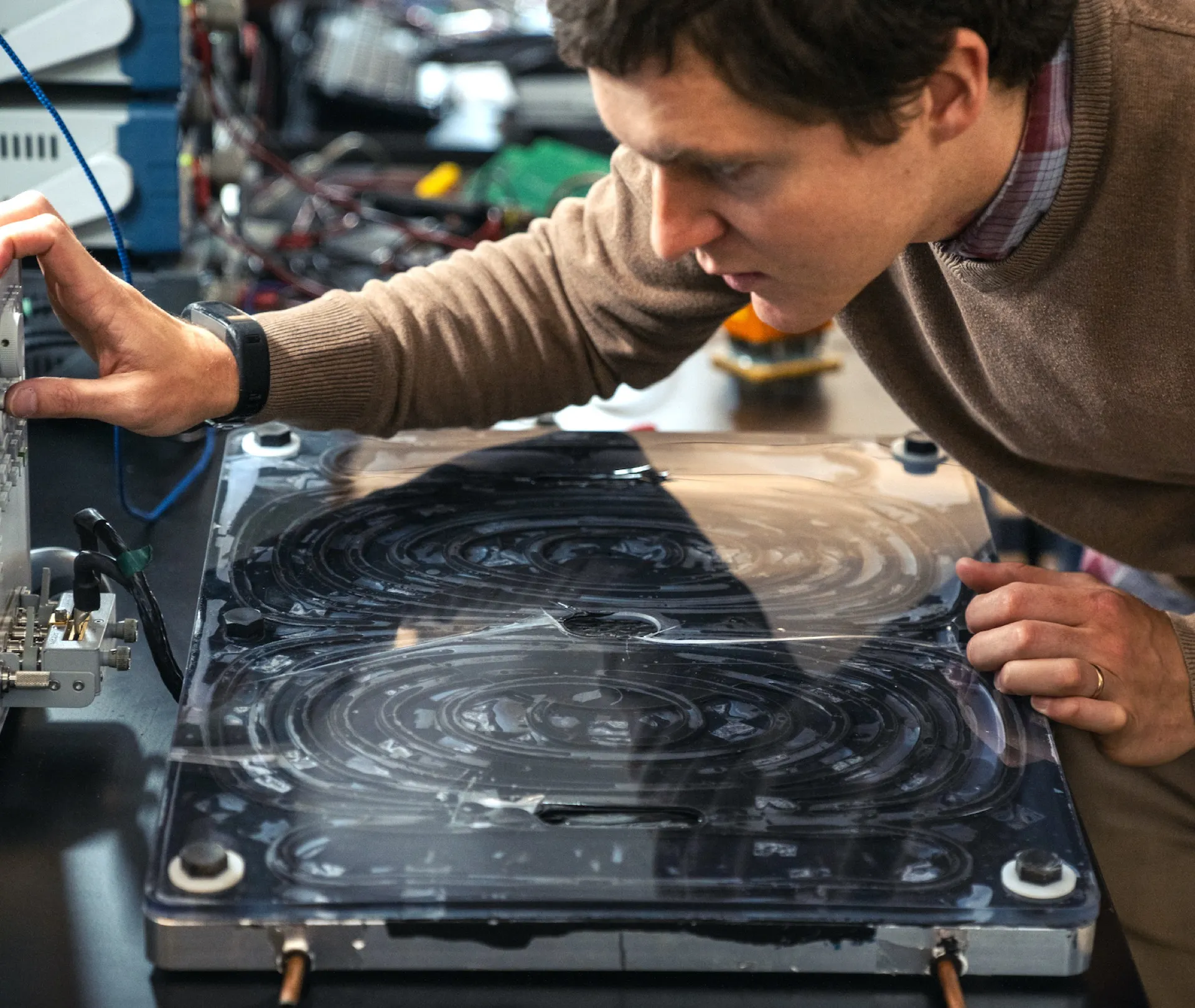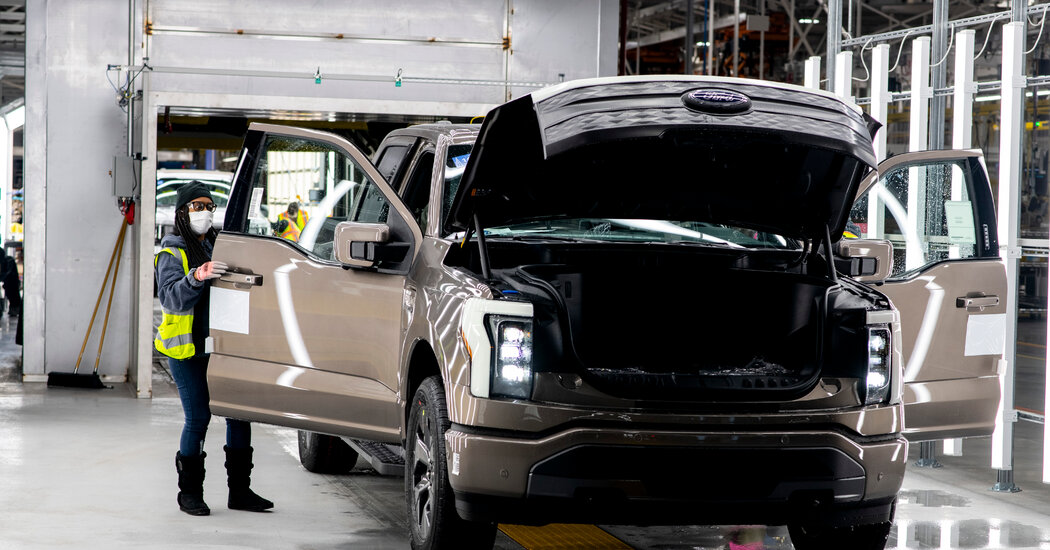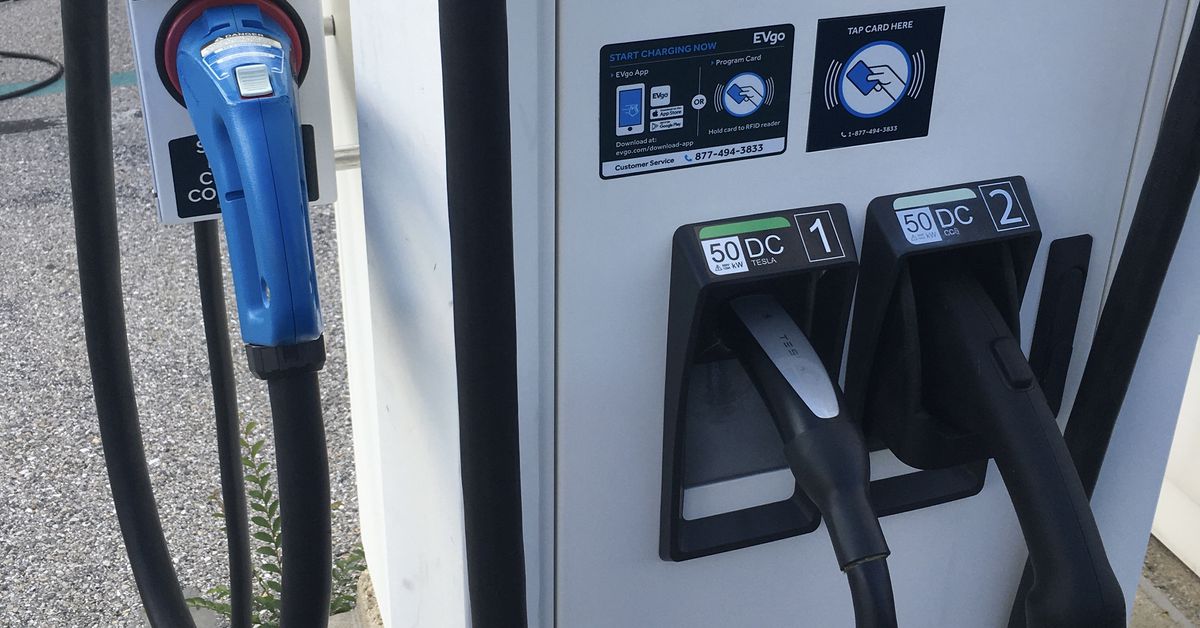Extra, Extra....Read All About It!
- Thread starter Harris005
- Start date
-
 From all of us at Scout Motors, welcome to the Scout Community! We created this community to provide Scout vehicle owners, enthusiasts, and curiosity seekers with a place to engage in discussion, suggestions, stories, and connections. Supportive communities are sometimes hard to find, but we're determined to turn this into one.
From all of us at Scout Motors, welcome to the Scout Community! We created this community to provide Scout vehicle owners, enthusiasts, and curiosity seekers with a place to engage in discussion, suggestions, stories, and connections. Supportive communities are sometimes hard to find, but we're determined to turn this into one.
Additionally, Scout Motors wants to hear your feedback and speak directly to the rabid community of owners as unique as America. We'll use the Scout Community to deliver news and information on events and launch updates directly to the group. Although the start of production is anticipated in 2026, many new developments and milestones will occur in the interim. We plan to share them with you on this site and look for your feedback and suggestions.
How will the Scout Community be run? Think of it this way: this place is your favorite local hangout. We want you to enjoy the atmosphere, talk to people who share similar interests, request and receive advice, and generally have an enjoyable time. The Scout Community should be a highlight of your day. We want you to tell stories, share photos, spread your knowledge, and tell us how Scout can deliver great products and experiences. Along the way, Scout Motors will share our journey to production with you.
Scout is all about respect. We respect our heritage. We respect the land and outdoors. We respect each other. Every person should feel safe, included, and welcomed in the Scout Community. Being kind and courteous to the other forum members is non-negotiable. Friendly debates are welcomed and often produce great outcomes, but we don't want things to get too rowdy. Please take a moment to consider what you post, especially if you think it may insult others. We'll do our best to encourage friendly discourse and to keep the discussions flowing.
So, welcome to the Scout Community! We encourage you to check back regularly as we plan to engage our members, share teasers, and participate in discussions. The world needs Scouts™. Let's get going.
We are Scout Motors.
You are using an out of date browser. It may not display this or other websites correctly.
You should upgrade or use an alternative browser.
You should upgrade or use an alternative browser.
Agreed. I recommend that any of you that are interested in the science/mechanics of EV batteries to read up on this.
Agreed. I recommend that any of you that are interested in the science/mechanics of EV batteries to read up on this.
Wow
"By 2027"
Early test drive with Chevy's new Silverado EV work truck. One thing that stood out to me was this basic work truck model with an expected 450 mile range was $77K. He mentions the same model with less batteries, with an expected 350 mile range coming out later. They are stating it to be around the $40K mark. 100 extra miles = $37K 
Not positive but there may be some extra subsidies that are only available for vehicles below a certain price point. Also, “around $40k” might be $49,999. And definitely before freight, dealer prep, dealer extra fee fee, market adjustment, nitrogen tires, rust proofing, paint sealant, fabric protectant, alarm and whatever else a dealer thinks they can get away with.
I hate dealers.
I hate dealers.
Don’t forget tint and pin stripes!Not positive but there may be some extra subsidies that are only available for vehicles below a certain price point. Also, “around $40k” might be $49,999. And definitely before freight, dealer prep, dealer extra fee fee, market adjustment, nitrogen tires, rust proofing, paint sealant, fabric protectant, alarm and whatever else a dealer thinks they can get away with.
I hate dealers.
Real painted pin stripes-not the cheap tape onesDon’t forget tint and pin stripes!
Most interesting part of this article….
“Further, it revealed U.S.-based research with lightweight materials that might be put to use in “pickup beds and rugged components” for future products. In a process called “sizing,” it’s working to optimize the fiber-matrix-interface in sheet molding compound (SMC) processes for better durability.”

 www.greencarreports.com
www.greencarreports.com
“Further, it revealed U.S.-based research with lightweight materials that might be put to use in “pickup beds and rugged components” for future products. In a process called “sizing,” it’s working to optimize the fiber-matrix-interface in sheet molding compound (SMC) processes for better durability.”

VW develops EV wireless charging, shows range-boosting materials research
VW has a future goal of upping the system to 300 kw, which would rival DC fast-charging connectors with a hands-off approach.

VW develops EV wireless charging, shows range-boosting materials research
VW has a future goal of upping the system to 300 kw, which would rival DC fast-charging connectors with a hands-off approach.www.greencarreports.com
Inductive charging is very inefficient compared to conductive wires. It generates a lot of waste through heating the coils.
The only reason to do this is for convenience, so that people can just drive into their garage and automatically charge without having to plug anything in.
Have you ever watched people park in a parking lot and observed how much trouble they have positioning their car. Going in and out trying to get straight and centered? With inductive charging, alignment between coils is critical in order to minimize the energy loss. I don’t think the average driver would be able to reliably park with the precision required to make it work properly.
When it comes to charging a cell phone inductively, the additional cost in energy per charge for the convenience gained is arguably an acceptable tradeoff. The added convenience might only cost a few ten thousandths of a cent per charge. But when you are charging a much larger battery the additional in-efficiency is more significant and may amount to a couple of thousand dollars over the life of the battery. Would there really any added convenience if you have to perfectly position the vehicle so that the inductive coils are aligned? Wouldn’t some drivers find it easier to just plug in a cable and save a bit of money doing so? For inductive charging to be practical the car would probably have to park itself and position itself to the charging coil.
I’d be curious of initial install cost of home plug in charger vs the inductive. Agree people can’t park straight to save their lives but for me it would be install costs of both and possible/required service/maintenance over life of charger type. I like the device on floor vs finding wall space and giving up storage. That said I’m still expecting a plug in type but other options are good for various scenariosInductive charging is very inefficient compared to conductive wires. It generates a lot of waste through heating the coils.
The only reason to do this is for convenience, so that people can just drive into their garage and automatically charge without having to plug anything in.
Have you ever watched people park in a parking lot and observed how much trouble they have positioning their car. Going in and out trying to get straight and centered? With inductive charging, alignment between coils is critical in order to minimize the energy loss. I don’t think the average driver would be able to reliably park with the precision required to make it work properly.
When it comes to charging a cell phone inductively, the additional cost in energy per charge for the convenience gained is arguably an acceptable tradeoff. The added convenience might only cost a few ten thousandths of a cent per charge. But when you are charging a much larger battery the additional in-efficiency is more significant and may amount to a couple of thousand dollars over the life of the battery. Would there really any added convenience if you have to perfectly position the vehicle so that the inductive coils are aligned? Wouldn’t some drivers find it easier to just plug in a cable and save a bit of money doing so? For inductive charging to be practical the car would probably have to park itself and position itself to the charging coil.
Nice to see the pricing begin to drop....

 www.nytimes.com
www.nytimes.com

Electric Vehicle Prices Fall as Automakers Raise Production
Ford, Tesla and other automakers are having to lower prices to lure buyers as the supply of battery-powered models begins to exceed demand.
Thanks for sharing. This is the best article to date. Sounds like they truly are listening-not that I doubted it but nice to hear it from the horse’s mouth.
I’ll throw out a “what-if”. There’s a mention of the 70’s. Is it really just the turning point as the article notes OR is there a little give away there on where the styling may be falling ????
I didn’t think about how many people suck at parking! That’s a great point. These articles are like puzzle pieces and clues. Although many automotive innovations and experiments never get off the drawing board. I wonder though if some sort of wireless charging might be good for say an entire parking lot. ICE cars and EVs (that accept wireless) wouldn’t have to compete for spaces. It seems that it might even be more reliable. I have gone to many public charging stations that have broken plugs, cables, main screens, whatever…. If it were embedded in the paving it might not suffer the same wear and tear. I dunnoInductive charging is very inefficient compared to conductive wires. It generates a lot of waste through heating the coils.
The only reason to do this is for convenience, so that people can just drive into their garage and automatically charge without having to plug anything in.
Have you ever watched people park in a parking lot and observed how much trouble they have positioning their car. Going in and out trying to get straight and centered? With inductive charging, alignment between coils is critical in order to minimize the energy loss. I don’t think the average driver would be able to reliably park with the precision required to make it work properly.
When it comes to charging a cell phone inductively, the additional cost in energy per charge for the convenience gained is arguably an acceptable tradeoff. The added convenience might only cost a few ten thousandths of a cent per charge. But when you are charging a much larger battery the additional in-efficiency is more significant and may amount to a couple of thousand dollars over the life of the battery. Would there really any added convenience if you have to perfectly position the vehicle so that the inductive coils are aligned? Wouldn’t some drivers find it easier to just plug in a cable and save a bit of money doing so? For inductive charging to be practical the car would probably have to park itself and position itself to the charging coil.
"And he’s less shy about exactly how not to restore a Scout, lessons learned when he sent his own truck to a shop in Iowa, spent thousands on a restoration, and then received a semi-complete heap of cobbled-together parts that simply wouldn’t run right. "
Is he talking about Super Scout Specialists or Anything Scout?
Is he talking about Super Scout Specialists or Anything Scout?
Two quotes I love:
“Talking design now,” Keogh says, “It has some iconic, fundamentally well-recognized proportions. It’s crystal-clear and you can draw that out yourself in terms of the A-pillar, in terms of the stance of the vehicle, how it rocks back in terms of the window treatment, in terms of the axle ratio. Crystal clear. And we definitely want to keep those iconic because they’re fundamental.”
“We actually want to bring a vehicle that kind of keeps this sort of American frontier spirit, where there’s still some mechanicalness and control to the thing. So you won’t see everything in the touchscreen, you’re gonna see switches, you’re gonna see differentials, and you’re gonna see the ability to work with the car as opposed to the car as an all-knowing spaceship.”
“Talking design now,” Keogh says, “It has some iconic, fundamentally well-recognized proportions. It’s crystal-clear and you can draw that out yourself in terms of the A-pillar, in terms of the stance of the vehicle, how it rocks back in terms of the window treatment, in terms of the axle ratio. Crystal clear. And we definitely want to keep those iconic because they’re fundamental.”
“We actually want to bring a vehicle that kind of keeps this sort of American frontier spirit, where there’s still some mechanicalness and control to the thing. So you won’t see everything in the touchscreen, you’re gonna see switches, you’re gonna see differentials, and you’re gonna see the ability to work with the car as opposed to the car as an all-knowing spaceship.”
Two quotes I love:
“Talking design now,” Keogh says, “It has some iconic, fundamentally well-recognized proportions. It’s crystal-clear and you can draw that out yourself in terms of the A-pillar, in terms of the stance of the vehicle, how it rocks back in terms of the window treatment, in terms of the axle ratio. Crystal clear. And we definitely want to keep those iconic because they’re fundamental.”
If this applies to the teaser silhouettes as well, the wheelbase and proportions of both models suggests that the pickup will be surprisingly large or the SUV will be surprisingly compact. If it's more the latter, I might line up to get one even with 4 doors.
I call these approaches the home appliance and the RC car:“We actually want to bring a vehicle that kind of keeps this sort of American frontier spirit, where there’s still some mechanicalness and control to the thing. So you won’t see everything in the touchscreen, you’re gonna see switches, you’re gonna see differentials, and you’re gonna see the ability to work with the car as opposed to the car as an all-knowing spaceship.”
The home appliance never sees daylight under the hood, it uses touchscreens and capacitive buttons, and is designed to smoothly go from A to B while looking polished and plastic while automatically inching through stop and go traffic. Anything that can be done in software is done in software. It has individually controlled brakes and motors, drive-by-wire, and if you have a wheel in the air, software brakes it to throw power to the opposite wheel. Everything is so tightly integrated that there are no real options for modifications without nerfing existing functionality. Utility is shoehorned within their jelly bean exteriors.
Not to say any of the home appliance aspects are necessarily bad. Jelly bean = good in an Abarth 500. Software magic allows Subaru to produce relatively capable vehicles for an extraordinarily affordable price.
On the other hand, the RC car operates with many of the mechanical aspects of an ICE vehicle and with an electric motor and battery at its core, along with a number of digitized features where suitable. There's an expansive aftermarket to up/sidegrade to users' tastes. There are no major roadblocks to changing fundamental components such as suspension; it may even be encouraged. Even factory options can cater to outdoor fun. Instead of X-Mode, you turn a knob or flick a toggle for the real locking differential that comes standard or you've optioned, then crawl forward with your feet and hands instead of flooring it and letting the software attempt to solve the puzzle. Utility naturally comes along with all that.
While I love this approach, one of the odd consequences is that you can end up with an awkward simulation of things that cannot be properly mechanical, like imaginary combustion audio or shifting. I know purists complain that it isn't real, then hide their smile after they find themselves having fun with the extra engagement in driving: It's the same reason people enjoy racing simulation even though it isn't real. That being said, a fake manual with a fake clutch is totally excessive too. Putting an auto's PRND & low ranges on a physical lever with a satisfying thump might be the sweet spot of familiar mechanical-ness.
Last edited:
Article on new charging network for North America

 www.theverge.com
www.theverge.com
Seven major automakers are teaming up on a North American EV charging network
Will this be the next big charging network to match Tesla’s?
Similar threads
- Replies
- 5
- Views
- 349
- Replies
- 21
- Views
- 731
- Replies
- 26
- Views
- 615

